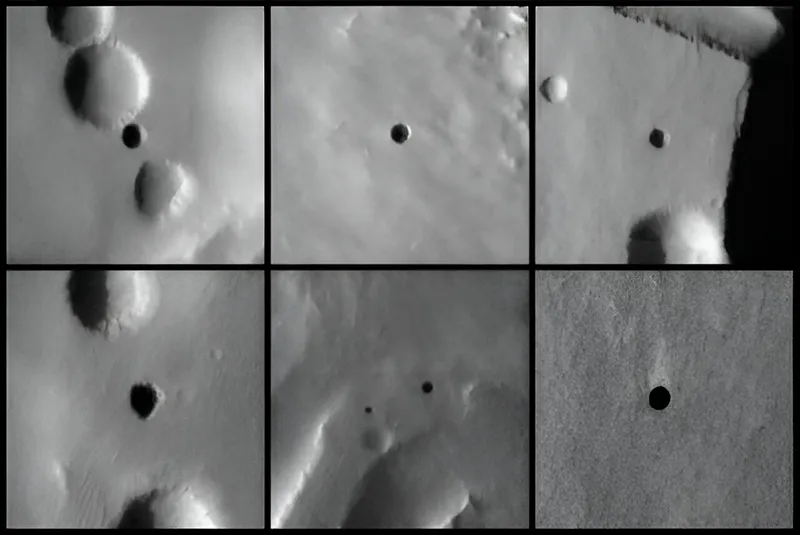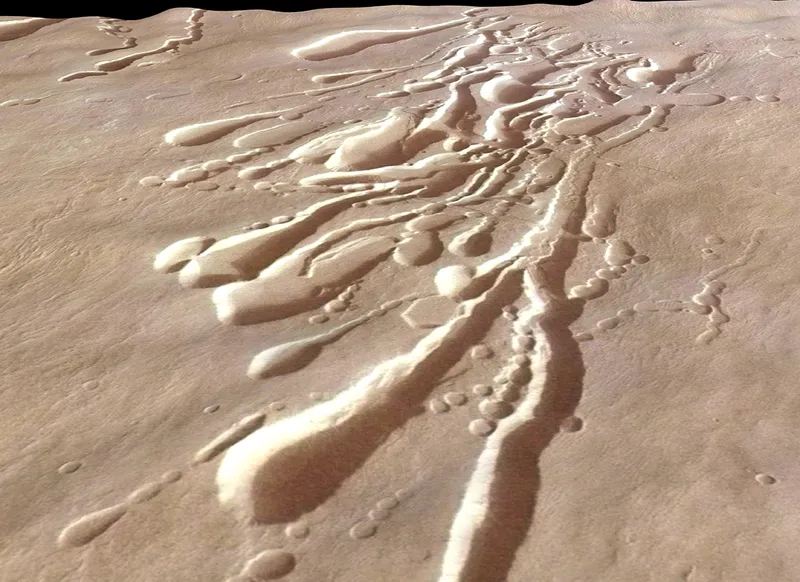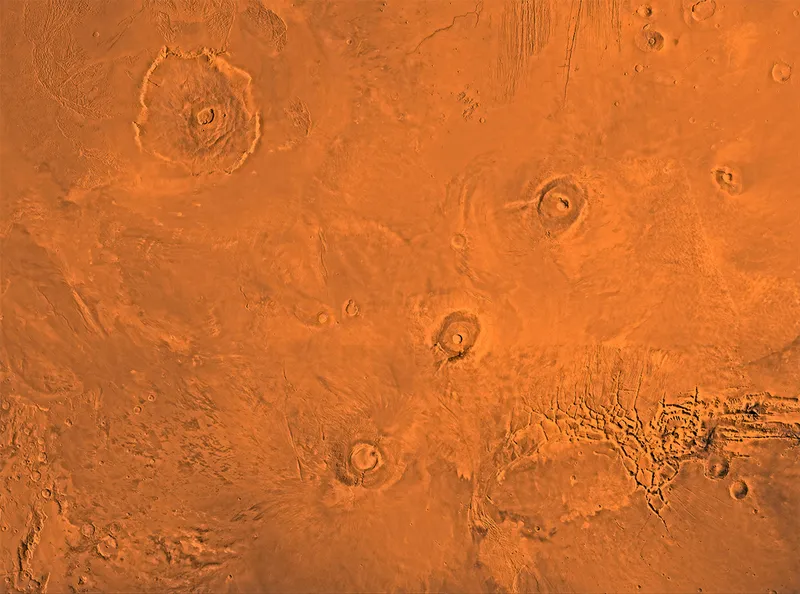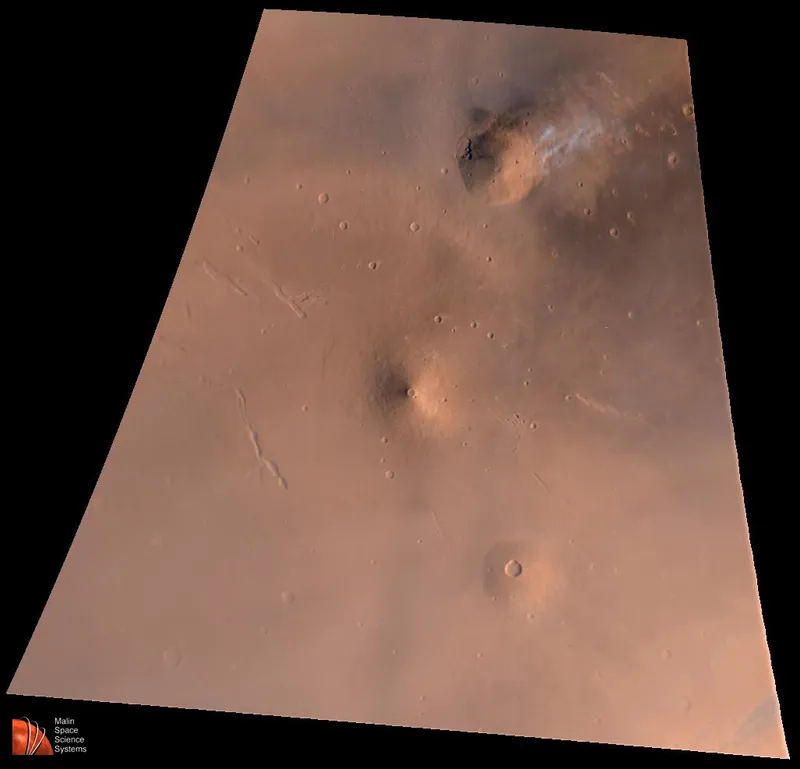Planetary scientists get particularly excited about finding caves on Mars.
Such subterranean structures offer very promising locations for establishing human habitats.
Their rock ceilings would provide protection from dust storms and micrometeoroid impacts, as well as shielding from cosmic radiation.
They also represent enticing targets for searching for signs of simple Martian life, as caves on Earth often sustain abundant microbial growth.

How to find caves on Mars
Lava tubes are one promising source of Martian caves.
These tubes form when a stream of volcanic lava develops a hardened crust on top, but continues to flow within, then empties to leave behind a hollow tunnel beneath the surface.
On Earth, they range from just a few metres long to the enormous 65km-long Kazumura Cave in Hawaii, and they can be up to 30 metres in diameter.
The main way that lava tubes on Mars are identified, and which also provides access down into them, is when a portion of the ceiling collapses to create a skylight.
Due to the weaker gravity on Mars, these potential cave entrances (PCEs) can be significantly larger than on Earth, and the lack of covering vegetation makes spotting them in satellite imagery relatively easy.
Traditionally, though, identifying PCEs on Mars – and indeed any other surface feature – has been very slow and laborious, with researchers having to eyeball thousands of images.

How machine learning can help
Thomas Watson and James Baldini, both in the Department of Earth Sciences at Durham University, have been working on automating this process using machine learning.
They developed a computer system known as an artificial neutral network, simulating a structure loosely based on mammalian brains.
They then trained this system to recognise lava tube openings by showing it lots of examples of already-identified PCEs, and then used it to process other images of the martian surface.
They focused on regions that have had lots of volcanic activity in the past, including along the line of three giant volcanoes in the Tharsis bulge that straddles the equator.

CaveFinder, as they dubbed the system, detected 61 previously unknown PCEs – adding to the existing catalogue of over 1,000.
The largest of these new PCEs – informally named Marvin by the researchers – is over 700 metres in diameter, making it a nice big target to aim for with a robotic lander mission.
Another, Emily, is located within the Elysium volcanic province in the northern hemisphere at a low altitude.

This is particularly significant because the thicker atmosphere makes for much easier mission landings by parachute, or exploring the lava tubes by robotic drones.
The authors do stress that their automated search method is still far from perfect.
After human inspection of the images, many of the locations that CaveFinder identified were, in fact, found not to contain a potential cave entrance, and the system also missed known cave openings.
Nonetheless, this represents a promising approach in the use of machine learning for sifting through vast datasets of imagery to spot new sites of interest.
Lewis Dartnell was reading Martian Cave Detection via Machine Learning Coupled with Visible Light Imagery by Thomas H Watson and James U L Baldini. Read it online at here.
This article appeared in the April 2024 issue of BBC Sky at Night Magazine.
